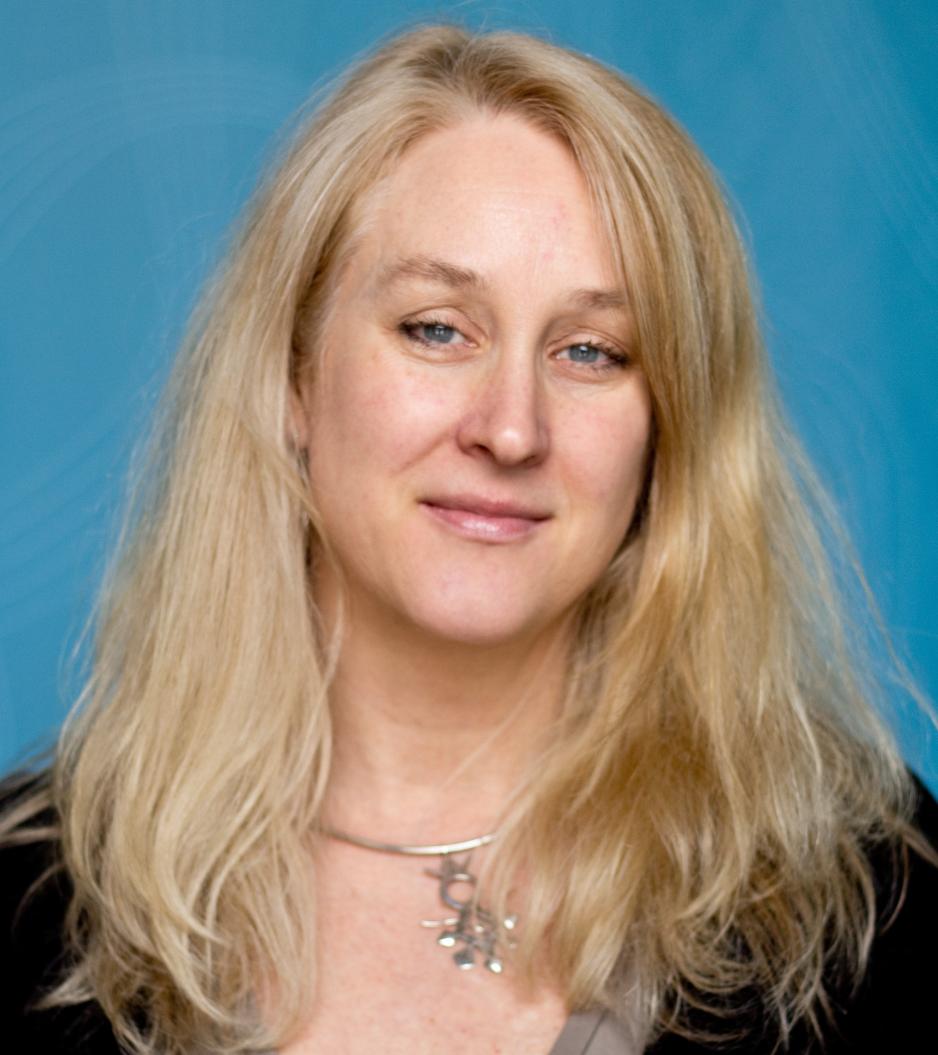Research debunks myth about women’s low publication output
New light has been shed on the long-held myth that female researchers have a publishing problem. It now appears clear that publishing points are far more a matter of one’s academic field and position level, not gender.
‘Women can’t keep up with men’ is the all-too-easy conclusion to draw from the overall publication figures showing that male researchers publish more on average than women researchers, both in Norway and internationally.
But the emerging picture is not so simplistic. A project under the Research Council’s BALANSE programme analyzed academic publication production using data from the CRIStin Research Information System and the NIFU Research Personnel Register.
Much of the gender difference in averages, it turns out, is a function of women comprising the majority in certain disciplines and position categories, and men the majority in others. These categories are marked by differing publishing patterns.
Moreover, a large proportion (over 40 per cent) of all publication points are earned by just 10 per cent of the researchers. And these super-productive researchers are by far mostly men.
Researchers feel that gender equality measures need to be better customized moving forward – and the Research Council of Norway agrees.
Read the news article: Women publish more than people think

Field and position, not gender
“It is so easy to attribute differences between the genders as a case of women, for a variety of reasons, prioritizing differently than men do. But we’ve been able to show a more nuanced picture, that context is a much more important factor than gender. If you put a woman into a different situation, her publishing pattern will also be different,” says Lynn Nygaard of the Peace Research Institute Oslo (PRIO).
Much of the gender difference in academic production disappears when statistics are corrected for discipline and position type. But there are more nuggets to be mined from the body of data. Researchers are now analysing leaves of absence, a factor they were not able to scrutinize the first time around.
“Our register does not indicate the reason a researcher took a leave of absence, but we know for instance that women still take longer parental leaves compared to men, although this difference is smaller than before. When measuring academic production over a longer timeframe, without factoring in whether a researcher has taken a leave of absence during that time, gender differences are apparent. That can certainly skew the numbers,” Nygaard believes.
Another factor not yet examined is the effect of eliminating the “statistical noise” from the 10 per cent segment of super-publishers.
“We know that a small group is producing research at a nearly unnaturally high rate, and as a rule those are men. This significantly raises the overall productivity average for men. If we correct for this and look only at “normal researchers” with a life outside of work, much of the gender difference dissipates.”
How much production is typical?
Once again it is the extensive Norwegian data sets that enabled Nygaard and her two co-authors to delve so deeply into the publishing patterns. The CRIStin system catalogues everything published by Norwegian researchers, in contrast to international databases that at best encompass only fragments of academic production.
“It is not news that women’s publishing patterns depend on context, but our results are more convincing because they are based on such strong data,” Nygaard explains.
She feels her team’s research can serve as a starting point for discussing what we expect from a typical researcher.
“I find it interesting, this great fascination for the super-productive researchers, because it reflects this assumption that more productivity is good, that a researcher should publish as much as possible. But does increased production really benefit research as a whole? And what actually should the life of a researcher be?” questions Nygaard.
The articles presenting their statistical results do not discuss this issue, but she believes it deserves to be addressed.
Should discuss what a good researcher is
“We also see – and now I’m speaking personally and far beyond our specific results – that Norwegians on average may appear less productive compared to researchers from other countries. Is this because Norwegians are not as industrious, or because we have other expectations for life than just conducting research all the time?”
She points out that in many countries, women choose to step away from research careers when they want to have a child, simply because it is impossible to have both.
“But those women who in other countries would have quit can remain in Norwegian research.”
She believes that the discussion as to what kind of academic value is desirable should be a consideration when studying the details of publishing patterns. In certain fields it is common to produce articles quickly in collaboration with many colleagues. In other fields, the norm is to write for a longer period, more deliberately and more independently. What kind of writing do we believe to be good, and what kind of context do we create to make that possible?
“It is lazy thinking to conclude that the differences are simply attributable to gender. There may be gender differences, but they are small compared to one’s position as a professor vs a post-doc, or the differences between disciplines.”
Ambivalent about publishing points system
When considering the productivity gap between genders, the researchers also examined the role played by the Norwegian Publication Indicator model. They found there is a risk that indicators that quantify productivity may work to men’s advantage. In March, the research financing committee for universities and university colleges recommended scrapping the Norwegian Publishing Indicator, and hearings on this move are underway.
Personally, Nygaard is undecided when asked whether the publishing points system is a good scheme.
“Our article points out that the Norwegian Publication Indicator takes the small gender differences that exist and magnifies them. Is that a fault in the indicator model, or does it simply reflect the fact that men and women occupy different places in the research system and that we have chosen to place more value on the places where men work? If we eliminate the publishing points system, we don’t fix the problem – only a symptom of it.”
What will certainly be lost by abandoning the Norwegian Publication Indicator are the detailed, quality-assured data sets that enable us to examine the finer distinctions within research productivity.
“I’d rather live with the annoying publishing points system, and criticize it, than lose access to the body of data it provides,” she reasons.
Leisure time a must
Rather than advocating simple solutions such as doing away with the publishing points system, says Nygaard, the political message should be to dig deeper to create more customized solutions where needed.
“Because even though we have eliminated much of the gender difference by breaking down the statistics, there are places where differences still exist. Monographs in the humanities are one such example. The humanities are the only field where monographs are important, and it is the male professors who have the luxury of time to author them.”
She believes the issue of time is an interesting one, when we connect it with what we know about how men and women spend their time outside the workplace. Women still spend more time on unpaid household chores and care work than men do.
“Authoring a monograph is a marathon that is often worked on in one’s free time. So have we created a system where people don’t have time to do their jobs in their working hours, while also holding different expectations for how men and women spend their time off?”
The question of work-life balance has been pushed to the forefront by the pandemic, amidst reports that some academic journals were hardly receiving any manuscripts from women anymore. Many speculated that during the lengthy periods of home office, women’s working hours were being swallowed up by housework and raising children, so that women had to deprioritize research and writing to a greater extent than men did.
Nygaard finds this issue interesting, but her group has not been able to identify any impacts of COVID-19 yet because the data sets cover only a small part of the pandemic period.
“Due to delays in the publishing system, it will take years before the pandemic effects become clearer. It would not surprise me if we see a downturn in women’s productivity, given that the bulk of household duties tend to fall on women.”
“But it would also not be a surprise if Norway, being more gender-equal, comes out ahead of other countries in that regard.”
Research Council seeking customized measures
The Research Council of Norway has also concluded that it is time to look beyond the statistical averages and instead begin tailoring measures to apply in response to different circumstances. Jesper W. Simonsen, an executive director at the Research Council, sees many positives in the results of Nygaard and her colleagues:

“I think the general belief has been that women publish less than men, and are cited less, even when all other conditions are equal. But this report shows us that when all else is equal, the publishing differences between genders are actually quite small. This mostly eliminates publishing as a gender-discriminatory factor,” he says.
Simonsen says the Research Council Executive Board recently discussed gender equality measures and concluded that the time has come to focus more on inequalities between different fields and sectors.
“In certain areas such as business and disciplines in the natural sciences and technology, women are indeed still heavily underrepresented. We want to look deeper than the statistical averages and examine the context, precisely as this research team advises. Specifically, portfolio boards will be tasked with developing customized measures for their fields,” he explains.
The executive board has also decided to extend the BALANSE programme and assign it a broader scope that includes not only top senior-level positions but also the various position categories, and then to give priority to those areas most in need of change.
New instruments at the top
Simonsen also finds it interesting that women become systematically associated with areas that publish less than in many male-dominated areas.
“If we continue to level out such differences, the statistical averages will also begin to equalize,” he adds.
“Does that mean that the goal is to raise all groups closer to that most productive 10 per cent of researchers?”
“No, but it does mean it’s still important to promote the role of women in those areas where they are underrepresented, all the way to the highest qualification level.”
He brings up the Norwegian Centres of Excellence (SFF) scheme as an example.
“This is an excellence-oriented instrument, and the SFF centres have been heavily male-dominated. The latest call for proposals, however, introduced a requirement that if an institution submits more than four grant applications, at least 40 per cent of those must have a female centre director.”
The requirement served to balance the gender ratio between applicants, and this balance held even after paring down the number of applications advancing to the next phase.
“What is so good about a measure like this is that it doesn’t entail any changes in assessing who is awarded funding, but the starting point is a gender-balanced applicant pool. And the impact can be felt later down the road, because applicants who win grants from the European Research Council often have an SFF background,” Simonsen points out.
Translated by Darren McKellep.
In a project under the Research Council’s BALANSE programme, three researchers analyzed academic publication production using data from the CRIStin Research Information System and the NIFU Research Personnel Register:
- Lynn P. Nygaard (Peace Research Institute Oslo (PRIO))
- Dag W. Aksnes (Nordic Institute for Studies in Innovation, Research and Education (NIFU))
- Fredrik N. Piro (NIFU)
The researchers recently published two articles on their findings:
Lynn P. Nygaard, Fredrik N. Piro & Dag W. Aksnes: Gendering excellence through research productivity indicators
Lynn P. Nygaard, Dag W. Aksnes & Fredrik Niclas Piro: Identifying gender disparities in research performance: the importance of comparing apples with apples
Also read their discussion in PRIO Blogs: Do Men Really Publish More than Women?



